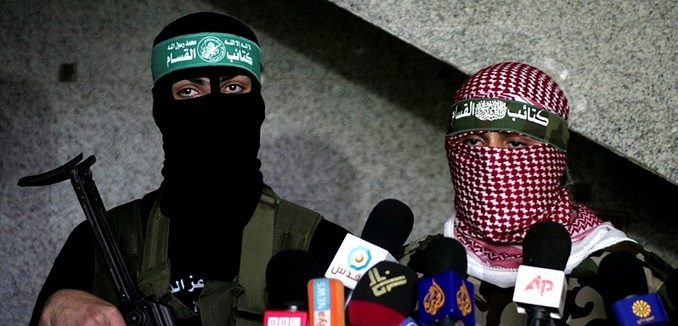Hamas blocked journalists from filming a major protest against power cuts in the northern Gaza Strip on Thursday, detaining an Associated Press journalist at gunpoint and badly beating an Agence France-Presse photographer who refused to relinquish his camera.
The journalists sought to cover a demonstration against chronic electricity shortages in Gaza, which the AP described as “one of the largest unauthorized protests in the territory since the Islamic militant group took power a decade ago.”
“Hamas forces blocked journalists from filming the gathering, and an Associated Press journalist was briefly detained at gunpoint until he handed over his mobile phones to plainclothes security men,” the AP reported.
According to the Foreign Press Association, the Hamas men “stuck a pistol in his chest and verbally threatened the reporter until he agreed to give them the phones.”
In its statement, the association added that “an AFP photographer was badly beaten to the head by uniformed policemen [and] required medical care after he had refused to give up his camera. The memory card of his camera was confiscated and he was placed under arrest. He was subsequently released and the memory card was returned.”
A day before the protest, Hamas arrested a local comedian who made a viral video protesting the power outages.
Hamas has frequently come under criticism for limiting press freedoms, including by warning journalists against sharing incriminating details in reports from Gaza and forcing them to delete such details if they are included in coverage of events.
In a 2009 report for the Gatestone Institute, veteran Palestinian affairs journalist Khaled Abu Toameh explained:
Foreign journalists who manage to cross into the Gaza Strip face many restrictions imposed by the Hamas government. Local facilitators hired by foreign journalists are also under scrutiny by the Hamas government. That is why they are careful not to bring the dirty laundry out by telling the foreign media about things that could reflect negatively on Hamas.
This was most evident during Operation Protective Edge, the 2014 war between Israel and Hamas. Foreign reporters later admitted that they had waited to report news that put Hamas in a bad light, such as their use of human shields and even their decision to fire rockets next door to their hotel, until after they had left the Strip for fear of retaliation. A Hamas spokeswoman admitted in August 2014 that the terror group had intimidated journalists into putting out more favorable coverage.
Former AP correspondent Mark Lavie wrote in The Tower that month that the intimidation of reporters was the primary reason news from Gaza is skewed:
A reporter for a European news outlet told a friend that he saw Hamas gunmen firing rockets from outside his hotel, but he didn’t take pictures, certain that if he had, they would have killed him. He told the tale only after he was safely out of Gaza. Apparently his news outlet did not have a permanent local stringer there, or he would not have been able to speak even from the relative safety of Tel Aviv without endangering his stringer. …
Journalists, of course, won’t tell you what you’re missing in the coverage. Their anchors or editors won’t tell you why large parts of the story are colored a certain way or taken from a certain angle. They don’t want to put their reporters’ lives at risk.
This is the main reason that video and pictures seem to flow freely out of Gaza. But critical elements of the story itself can’t, and neither can all the pictures and video. It gives the impression that the story is being covered, when only part of it—sometimes a small part—is being covered.
In August, the nonprofit organization Human Rights Watch condemned the treatment of journalists by both Hamas and the Palestinian Authority, stating that their tactics led to a “chilling effect” on freedom of expression in the Palestinian territories. “Both Palestinian governments, operating independently, have apparently arrived at similar methods of harassment, intimidation and physical abuse of anyone who dares criticize them,” said Sari Bashi, HRW’s Israel/Palestine director.
In 2015, the Palestinian territories received an unfavorable press freedom score of 84 (with 100 being the worst) from Freedom House. A survey released by the Palestinian Center for Development and Media Freedoms in 2014 found that “80% of Palestinian journalists in the West Bank and Gaza practice self-censorship of their writing.” A poll published that same year by the Palestinian Center for Policy and Survey Research found that 70 percent of Palestinians did not feel that they could criticize the PA.
[Photo: Mohammed Othman / Flash90 ]




